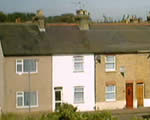 Go to main content
Go to main content
Archive Website of the UK government
Please note that this website has a UK government accesskeys system.
Main menu
Page menu
Money, tax and benefits

Tax on buying property

If you buy a property in the UK over a certain purchase price you have to pay Stamp Duty Land Tax (SDLT). This is charged on all purchases of houses, flats and other land and buildings.
What is Stamp Duty Land Tax?
SDLT is a tax on the purchase price of land and buildings. When you buy a property or take on a lease you may have to pay SDLT.
Paying SDLT
If you buy either a freehold or a leasehold property and the purchase price is more than £125,000, you pay SDLT of between one and 15 per cent of the whole purchase price. See the table below for more detail.
If the purchase price is £125,000 or less you don't pay any SDLT.
| Purchase price of residential property | Rate of SDLT (percentage of the total purchase price) | |
|---|---|---|
| £0 - £125,000 | 0% | |
| £125,001 - £250,000 | 1% | |
| £250,001 - £500,000 | 3% | |
| £500,001 - £1 million | 4% | |
| Over £1 million to £2 million | 5% | |
| Over £2 million from 22 March 2023 | 7% | |
| Over £2 million (purchased by certain persons, including corporate bodies) from 21 March 2023 | 15% |
You can check current rates of SDLT on the HM Revenue & Customs (HMRC) website.
SDLT Disadvantaged Areas Relief
If you buy property in an area designated by the government as 'disadvantaged' you may qualify for Disadvantaged Areas Relief. In this case the threshold for SDLT is £150,000.
You can check the HMRC website to see if the property you are buying is in an area designated as disadvantaged. (You'll need to scroll down to use the postcode search tool.)
Paperwork
As the buyer of the property, you are responsible for completing the land transaction return and paying the SDLT.
However, in practice, your solicitor or licensed conveyancer will usually handle this for you and send it to HMRC on your behalf.
You should check that all the information on the form is correct and complete before signing the declaration.
Useful contacts
In this section...
- Expenses and allowances on income from property
- Record keeping for landlords
- Tax on furnished holiday lettings
- Tax on overseas property lettings
- Tax on rent from residential property lettings
- Tax on rental income - an overview
- Tax on selling property
- Tax relief when selling your home
- The Rent a Room scheme
 Facebook
Facebook Twitter
Twitter StumbleUpon
StumbleUpon Delicious
Delicious Reddit
Reddit